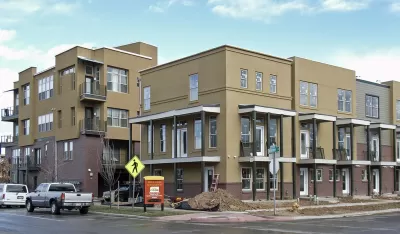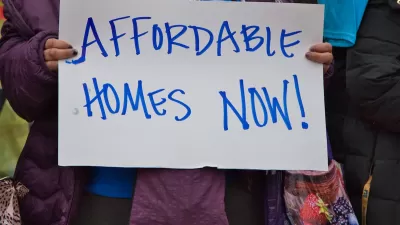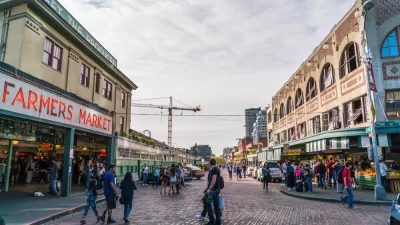New research finds lower displacement rates in neighborhoods with more new housing development. Slowing or stopping new development has the opposite of the desired effect, constricting housing supply, driving up rents, and displacing residents.

An article by Joe Cortright makes that by preventing development, communities concerned about displacement exacerbate the problems they had hoped to avoid. New development, according to Cortright, s necessary to prevent displacement.
"Slowing or stopping new development, particularly new housing development has exactly the opposite of the desired effect. It constricts the housing supply, drives up rents and fuels displacement."
"We’ve seen this time and again. A couple of months back, we profiled two Oakland neighborhoods, Uptown and Fruitvale. Both experienced almost identical increases in rents and home values as the Bay Area city boomed. But Fruitvale, which has built more housing has seen dramatically less demographic change, while Uptown which has built almost no new housing, has seen its population shift."
"The same holds for two neighborhoods in Washington DC’s 20003 zip code, Capitol Hill and the Navy Yard. Historic Capitol Hill has organized to largely block most new development; the Navy Yard area (near the new Washington Nationals ballpark) has seen thousands of new apartments built in the past decade. As Greater Greater Washington describes, the addition of new apartments has helped push down rents in the Navy Yard (the orange line) while rents in Capitol Hill (purple) continue to climb."
"If you don’t build new housing, you intensify the shortage, raise the rents, and amplify the displacement."
FULL STORY: If You Want Less Displacement, Build More Housing

Planetizen Federal Action Tracker
A weekly monitor of how Trump’s orders and actions are impacting planners and planning in America.

Chicago’s Ghost Rails
Just beneath the surface of the modern city lie the remnants of its expansive early 20th-century streetcar system.

San Antonio and Austin are Fusing Into one Massive Megaregion
The region spanning the two central Texas cities is growing fast, posing challenges for local infrastructure and water supplies.

Since Zion's Shuttles Went Electric “The Smog is Gone”
Visitors to Zion National Park can enjoy the canyon via the nation’s first fully electric park shuttle system.

Trump Distributing DOT Safety Funds at 1/10 Rate of Biden
Funds for Safe Streets and other transportation safety and equity programs are being held up by administrative reviews and conflicts with the Trump administration’s priorities.

German Cities Subsidize Taxis for Women Amid Wave of Violence
Free or low-cost taxi rides can help women navigate cities more safely, but critics say the programs don't address the root causes of violence against women.
Urban Design for Planners 1: Software Tools
This six-course series explores essential urban design concepts using open source software and equips planners with the tools they need to participate fully in the urban design process.
Planning for Universal Design
Learn the tools for implementing Universal Design in planning regulations.
planning NEXT
Appalachian Highlands Housing Partners
Mpact (founded as Rail~Volution)
City of Camden Redevelopment Agency
City of Astoria
City of Portland
City of Laramie





























